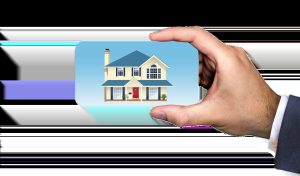Floating Homes: Living on Water in the Age of Climate Change
Floating homes have been an unconventional option for those seeking to live on the water for centuries. However, with the increasing threat of climate change, these unique dwellings are gaining popularity among individuals and communities who are looking for a more resilient way of living. As sea levels continue to rise and extreme weather events become more frequent, floating homes have become a viable solution to combat the effects of a changing climate. In this article, we will explore the concept of floating homes and how they are becoming a feasible housing option in the age of climate change.
The Need for Floating Homes
The effects of climate change are being felt all around the world. From rising sea levels and extreme weather events to droughts and heatwaves, these changes are not only impacting the environment but also the way we live. As traditional homes near the water face the risk of flooding and severe damage, the need for alternative housing solutions has become more pressing than ever.
What are Floating Homes?
Floating homes, as the name suggests, are homes that are built on water. They are designed to withstand the changing water levels and provide a safe living space even in the event of floods or other natural disasters. These homes also have the capability to move and adapt to changing water levels, making them a resilient housing option for the future.
The History of Floating Homes
The concept of living on water is not a new one. In fact, many cultures throughout history have used floating homes as a means of living. In areas such as the Netherlands, for example, floating homes have been a popular housing solution for centuries due to the country’s low-lying geography. However, with the threat of climate change, the demand for floating homes has extended beyond these traditional regions to places that are now facing the consequences of a changing climate.
The Benefits of Living on Water
Aside from the obvious benefit of being able to adapt to changing water levels, floating homes offer other advantages as well. For one, these homes have a smaller environmental footprint compared to traditional homes. They also have the potential to be self-sufficient, with the ability to generate their own energy through solar or wind power. Moreover, living on water can provide a unique connection to nature and a peaceful way of life that is not possible with traditional housing options.
The Challenges of Floating Homes
While floating homes may seem like a utopian solution to the effects of climate change, they do come with their own set of challenges. Building a floating home requires specialized engineering and construction, which can make it a costly option. Moreover, there are zoning and legal restrictions that may limit the ability to build floating homes in certain areas. Additionally, there is the risk of maintenance and potential damage from storms, which can be a concern for those considering this lifestyle.
The Future of Floating Homes
Despite the challenges, there is no denying the potential of floating homes as a sustainable housing solution for the future. Architects and designers are continuously exploring new and innovative ways of creating floating homes, making them more affordable and adaptable. In some places, floating homes are being integrated into urban planning as a means of creating affordable and sustainable housing options. As the threat of climate change continues to loom, it is likely that the demand for floating homes will only continue to increase.
In conclusion, floating homes may have once been considered a whimsical housing option, but they are quickly becoming a serious solution for the effects of climate change. With the ability to adapt and a smaller environmental footprint, these resilient homes offer a glimpse into what sustainable living in the face of a changing climate could look like. While the challenges may still exist, it is clear that floating homes have the potential to drastically change the way we live in the future.









